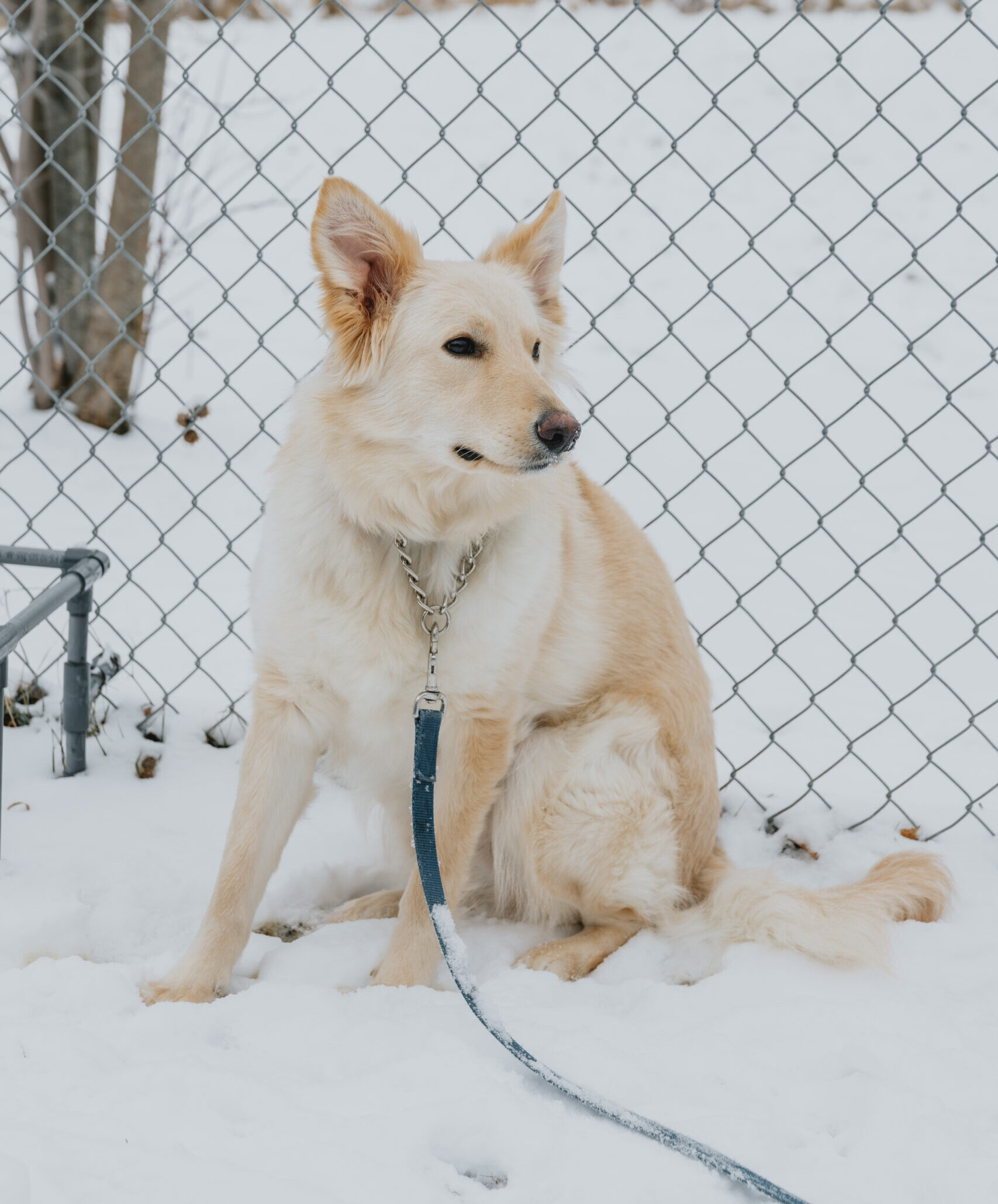Cold weather pet safety tips
by Ontario SPCA and Humane Society | General Pet Care | November 26, 2024

We want to make sure you start the winter season off on the right foot – or should we say, paw? Here are some cold weather pet safety tips to help you recognize when your dog is too cold, and how to identify signs of hypothermia.
Signs that can indicate your dog is too cold
- Shaking or shivering
- Hunched posture with a tucked tail
- Whining or barking
- Change in behaviour, like seeming anxious or uncomfortable
- Reluctance to keep walking or tries to turn around
- Seeks places for shelter
- Lifts paw off the ground
Signs of hypothermia
If you suspect your dog is displaying signs of hypothermia, wrap your dog in a blanket or coat, seek a warm shelter, and contact your vet immediately. Signs to watch for include the following:
- Weakness
- Lethargy
- Muscle stiffness
- Slow, shallow breathing
- Lack of mental alertness
- Fixed and dilated pupils
- Stupor-like state
- Loss of consciousness
It’s important to pay attention to these warning signs, but you shouldn’t wait to see the first signs of discomfort to call your walk quits. If you think it’s too cold for you, then it’s too cold for your dog.
While maintaining your dog’s exercise requirements during the winter is important, when conditions are especially cold, it’s a good idea to cut your walk short and supplement your pet’s exercise with some indoor activities.
Dogs outside
When the temperature drops below freezing, pets should not be left outside for extended periods. Cats, short-coated dogs and puppies are particularly vulnerable in cold temperatures. Keep cats indoors and protect your dogs from frostbite and hypothermia by limiting outdoor time to short periods during cold weather.
Consider slipping your short-coated dog or puppy into a comfortable dog sweater or coat as an extra layer of warmth. Never shave your dog down to the skin in winter, as a longer coat will provide more warmth. When bathing your dog during winter months, ensure they are completely dry before taking them outside.
Take pet precautions
Use a damp towel to wipe your pet’s paws and underside after being outside. Salt and other chemicals used to melt snow and ice on roads and sidewalks can irritate and burn your pet’s sensitive paws – and can cause injury if ingested. Also, remove ice balls by placing your pet’s feet in warm (not hot) water before drying them off with a towel. Consider using “booties” to protect your pet’s paws.
Always keep dogs leashed when walking near frozen bodies of water where ice conditions are unsafe or unknown. Dogs should also be leashed during snowstorms, as they can lose their scent and easily become lost.
Indoors, ensure your pet always has a warm place to sleep away from drafts and off cold floors. A thick cozy dog or cat bed with a blanket or pillow will keep them comfortable.
With these tips in mind, have a fun and safe winter!
If this information was helpful, please help us continue to educate about pet health and well-being by making a donation. As a registered charity that does not receive annual government funding, the Ontario SPCA depends on the generosity of donors to change the lives of animals in need.
Categories
Testimonial
Wish to thank everyone involved
I wish to thank everyone involved in the care and rescue of animals, especially volunteers.
